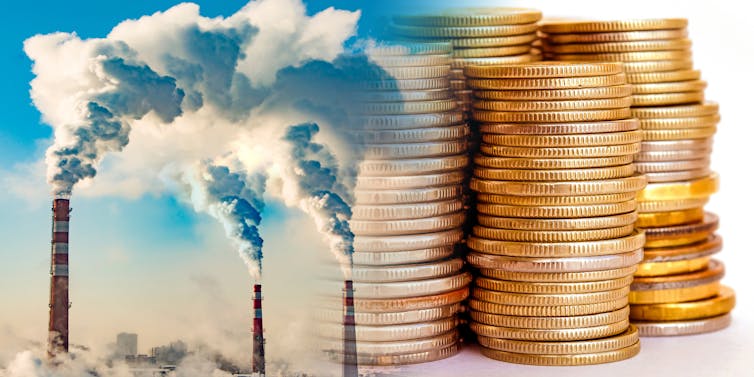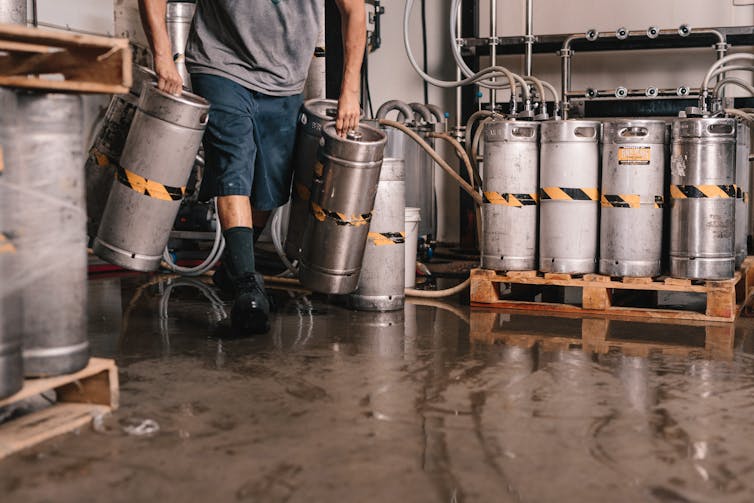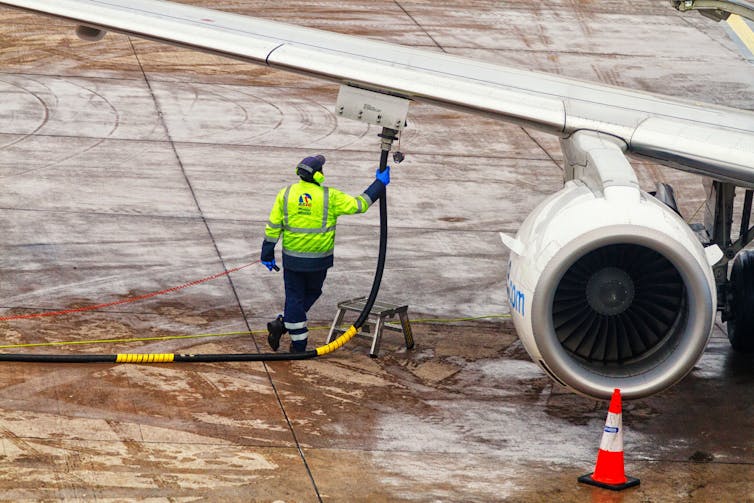
Ella Adlen, University of Oxford and Cameron Hepburn, University of Oxford
It’s far easier to avoid burning fossil fuels than it is to clean up CO₂ emissions once they’re in the Earth’s atmosphere. But the world no longer has the luxury of choice – drastic emission reductions and rapid CO₂ removal and storage will both be necessary to avoid the worst impacts of global heating.
What if, instead of wasting all that CO₂, it could be turned into something useful? There’s currently little economic incentive for industries that emit CO₂ to capture it, let alone to draw it directly down from the atmosphere. Identifying valuable products and how to make them might kickstart CO₂ removal on an industrial scale, and help bring down emissions in the process. In our recent paper, we set out to clarify what these processes and products might be.
Read more:
CO₂ shortage: why can’t we just pull carbon dioxide out of the air?
We considered processes that use CO₂ captured from industrial emissions, and also biological processes that can directly draw down CO₂ from the air. We projected that between one and ten gigatonnes of CO₂ could be utilised per year by 2050, at costs of under USD$100 (£77) per tonne of CO₂. Humans currently emit 37 gigatonnes of CO₂ a year, and we need to reduce our impact to net zero by around 2050. Some estimates suggest this might mean removing around ten gigatonnes of CO₂ a year from 2050 onward. Some of these ideas for using CO₂, if implemented properly, could play a role in making that more economically viable.
Some ideas for using CO₂ might not get off the drawing board. But with the right investment and incentives, others may move from niche research projects into credible plans, and from the work of small businesses to the goal of entire industries. Here is a selection of the ways that one person’s pollution could become another’s product.
 Creating a commodity out of carbon could help kickstart its removal from the atmosphere. Elevate on Unsplash/Shutterstock
Creating a commodity out of carbon could help kickstart its removal from the atmosphere. Elevate on Unsplash/Shutterstock1. Make buildings
There are several ways in which buildings can be constructed with materials made from CO₂. The first is obvious: use wood. Growing and sustainably harvesting trees for building means that CO₂ is taken from the atmosphere, converted into a valuable commercial product, and stored as carbon in long-lived buildings.
It also reduces demand for cement, which is responsible for 10-15% of global greenhouse gas emissions through its production. New technologies, such as cross-laminated timber or acetylated wood, are making this substitution ever easier.
The second way is to use and then store CO₂ in concrete-making processes, by curing cement or in the manufacture of other ingredients like aggregate.
2. Create plastic products
CO₂ can be used in polymers to make durable plastics for cars and buildings. Around 60% of plastics have applications in sectors other than packaging. Plastics made from CO₂ could displace plastic products made from fossil fuels for these sectors, particularly as they don’t require toxic or dirty ingredients such as phosgenes or epoxides, and can be cheaper to make than fossil-fuel based materials. Because the CO₂ molecule is a stable part of the backbone of the polymer, it can be stored in these materials for as long as they last.
3. Make fuel or fertilisers
CO₂ can be used as a feedstock for many chemical processes, with hundreds of potential end products, including hydrocarbon fuels and urea fertilisers.
Fuels made from CO₂ can exist in the form of methanol as well as more complex products like so-called synfuels. These fuels can often be blended or moved around using existing infrastructure like pipes and tankers. And although CO₂ fuels are currently very costly to manufacture, in the future they might be valuable in niches like aviation or long-distance shipping, which are more difficult to decarbonise than trains and cars because they need fuels with higher energy densities.

While it will be comparatively easy for cars and trains to undergo electrification, aeroplanes will still need liquid fuels with high energy densities for a while. Milosz Maslanka/Shutterstock
If the CO₂ product is a fuel or a fertiliser, the CO₂ ends up back in the atmosphere once used. While two uses of the carbon is better than one, if the carbon atom originally came from a fossil fuel, it’s not a long-term solution. To be climate neutral, the CO₂ feedstock will have to be sourced from the air – so the CO₂ is taken from the atmosphere, made into fuel, and then emitted back to the atmosphere. This is currently expensive and technically challenging. Crucially, the energy required for this process also needs to be renewable.
4. Increase crop yields
There’s emerging evidence that increasing the amount of carbon in soils can also increase crop yields. This is a natural form of CO₂ utilisation that already happens – scientists and farmers can just give it a helping hand. One particularly promising way is by using biochar – plant material that has been converted into a stable form of organic carbon via a process known as pyrolysis. Biochar buried in soils could store carbon for the long term and increase crop yields.
The general benefits of replenishing and maintaining carbon in the soil are well established, but using soil as a store of carbon is challenging because it is easily disturbed.
Read more:
We need more carbon in our soil to help Australian farmers through the drought
5. Extract more oil
Counter-intuitively, it’s possible to both produce oil and store CO₂. That’s because injecting CO₂ into an oil well increases the amount of oil that can be recovered – so-called “CO₂ enhanced oil recovery”.
It is actually possible to operate the well so that more CO₂ is put into it than is emitted in the process of producing the oil and burning it. But policy changes would be needed to incentivise this – oil companies would not do it otherwise. And it’s a temporary fix. In a world that has fully decarbonised, demand for fossil oil should be close to zero.
Nonetheless, this could be a short-term way to stimulate much needed demand for CO₂ capture, as emitters could sell their waste CO₂ to oil producers.
All these options for using CO₂ have potential, but making them a reality will need a clear understanding of the possible unintended consequences. Many could be failures, so it’d be unwise to rely solely on any one of them, but instead, spread bets widely.
This article is republished from The Conversation under a Creative Commons license. Read the original article.




18 Comments
Pingback: water sounds
Pingback: view publisher site
Pingback: Russians own bitcoin: Should we ban it?
Pingback: vapes
Pingback: Stapelstein Balance Board Violet
Pingback: ทดลองเล่นสล็อตฟรี PG
Pingback: dultogel rtp
Pingback: LSM99 สล็อตแตกง่ายเว็บตรง รวมค่ายมากสุดในไทย
Pingback: หวยไทย คืออะไร ?
Pingback: สล็อตออนไลน์เกาหลี
Pingback: https://nivata.shop/pocketoption-1/exploring-the-benefits-of-pocket-option-trading/
Pingback: เช่าเครื่องเสียง
Pingback: lazywin888
Pingback: y2k168
Pingback: Joseph
Pingback: Aviator
Pingback: นัดเด็ก
Pingback: มีบุตรยาก